Bee-eater on 'verge of laying' after Norfolk nest upset
- Published
The RSPB said the birds were "an unmistakable visitor to have arrived in Norfolk"
A rare bee-eater bird is believed to be on the "verge of laying again" in the UK after its first attempt was thought to have been upset by a predator.
Last month, three of the birds made a historic return to England at a sand quarry near Cromer, in Norfolk, after successfully raising chicks last year.
The RSPB said the colourful birds have returned to courtship rituals, despite a stoat being seen near the nest site, external.
"They would have left if they weren't interested in nesting," it said.
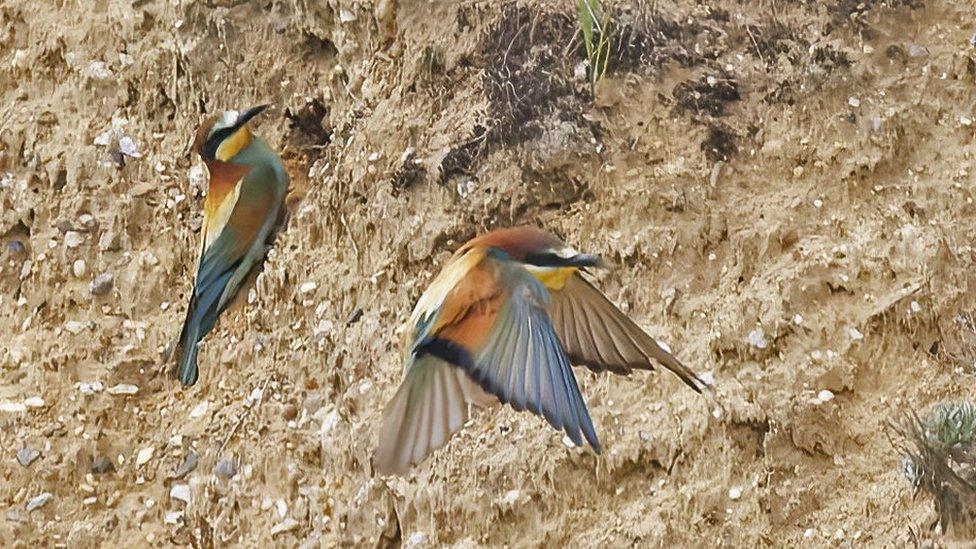
Bee-eaters, pictured at their burrows at the quarry, raise their chicks communally
Mark Thomas, from the bird conservation charity, said the European bee-eater trio - which included a nesting pair - was believed to have started nesting soon after arriving.
They were seen repeatedly going into the same sand burrow as last year, with the female believed to have been incubating eggs.
However, the birds' behaviour suddenly changed after the stoat was spotted close by.
But in recent days, the bee-eaters have been spotted flying into the same burrow again.
"The fact they're linked to the quarry and going into the hole every day indicates a second attempt," said Mr Thomas.
"It's then a case of there being enough time left for the eggs to hatch and feed the young."
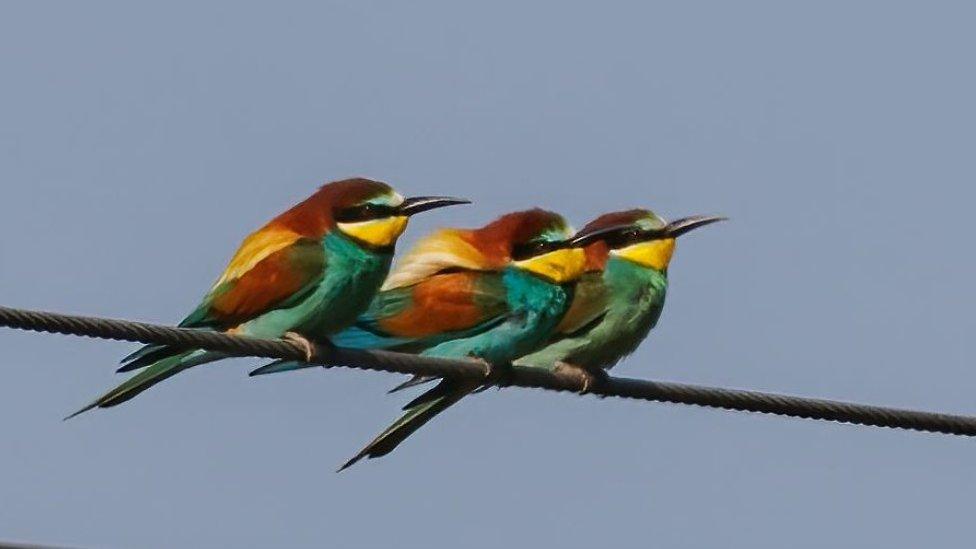
This year marks the seventh breeding attempt in England in the past 20 years, the bird charity said
Last summer, five chicks hatched with three successfully fledging the nest over the August bank holiday weekend.
Mr Thomas said events were "slightly behind what happened" last year, with the bee-eaters expecting to leave at the end of the summer.
The species is commonly found in the southern Mediterranean and northern Africa.
There have been just seven recorded breeding attempts in the UK over 20 years.
"It's marvellous to see such an attractive bird and find it colonising in the UK and doing that specifically in Norfolk," said Mr Thomas.
"For the people seeing it through their telescopes, it's a dream bird; people are genuinely overwhelmed by seeing such a bright bird.
"But it's a definite sign of climate change, which is extremely concerning."
A public viewing area, external, managed by the RSPB, has been attracting about 250 people a day during the week, with more visiting at weekends.
RSPB workers have been protecting the nesting site from foxes and badgers, while also ensuring the birds are not disturbed by humans.

The bee-eaters are about the size of a starling and can be identified by their red backs, blue bellies and yellow throats
There are 27 different types of bee-eaters, mostly native to Asia and Africa.
The birds are known to migrate to southern Europe in late April through to early June.
The RSPB said bee-eaters, about the size of starlings, could be identified by their red backs, blue bellies and yellow throats.
As well as bees, they feed on dragonflies and other flying insects which they catch in mid-air.
The viewing area is open to the public, costing £5 per person which is imposed to cover the cost of site monitoring and protection.

Follow East of England news on Facebook, external, Instagram, external and Twitter, external. Got a story? Email eastofenglandnews@bbc.co.uk, external or WhatsApp us on 0800 169 1830
- Published16 June 2023
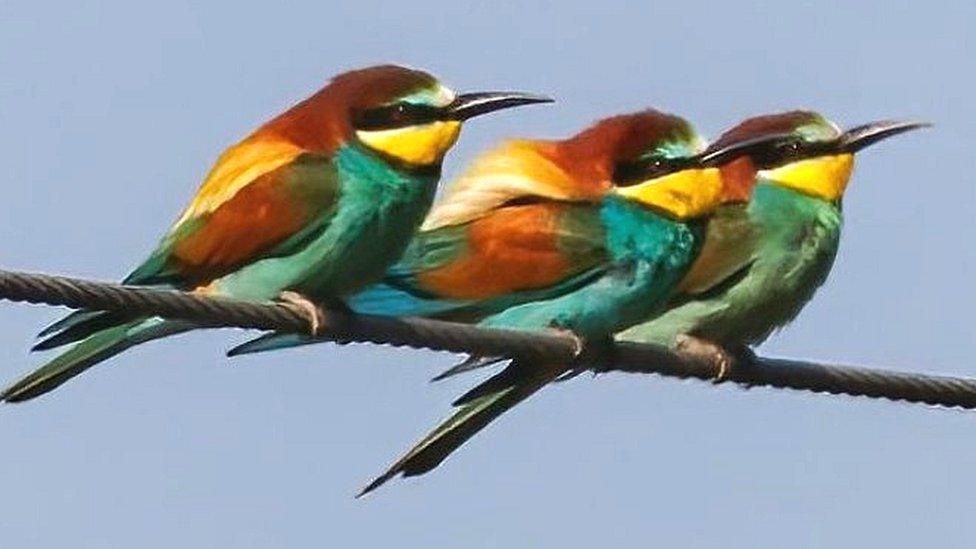
- Published31 August 2022
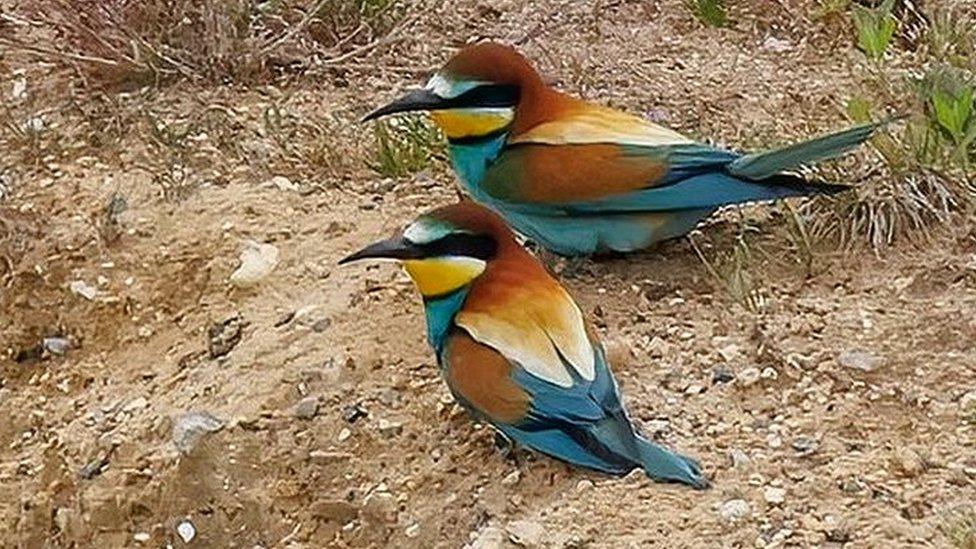
- Published17 June 2022
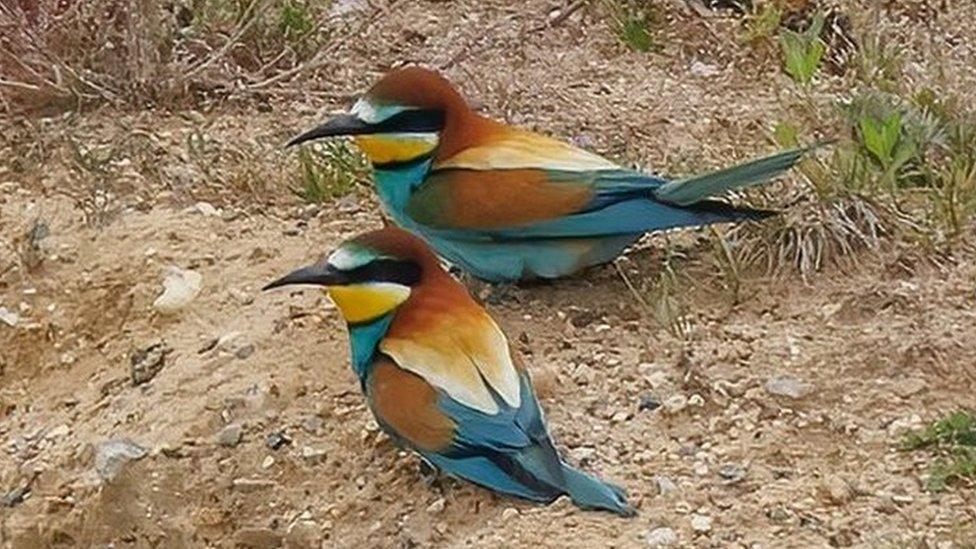
- Published23 June 2021
